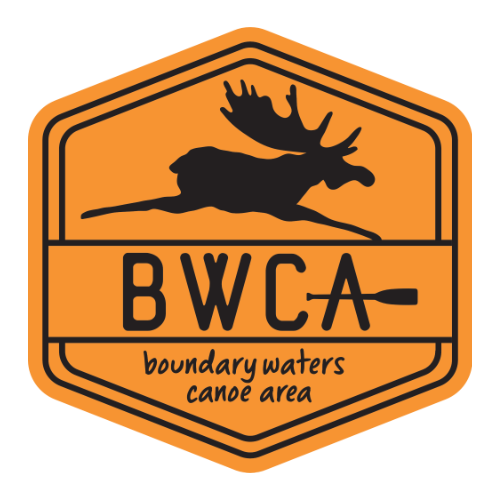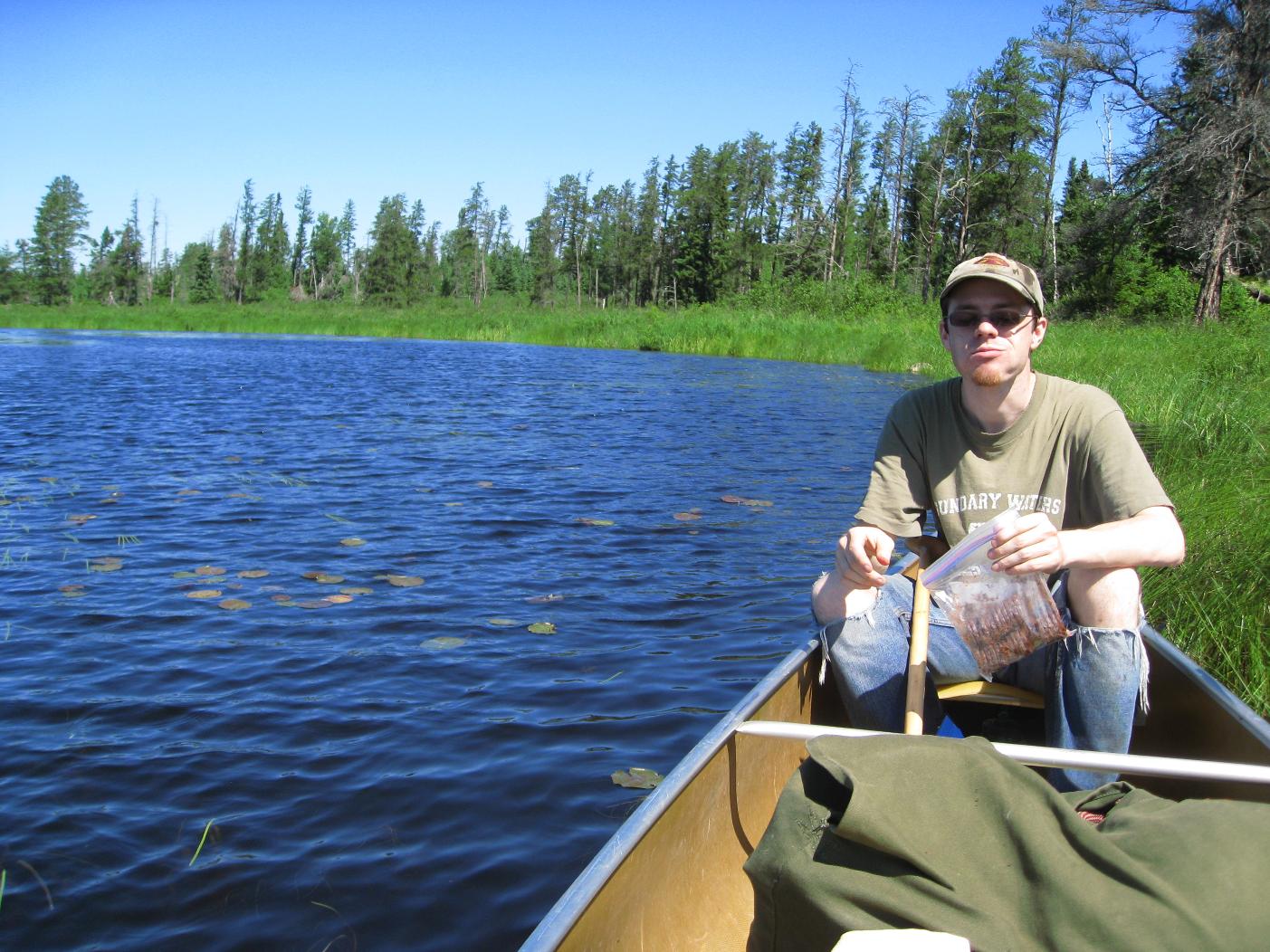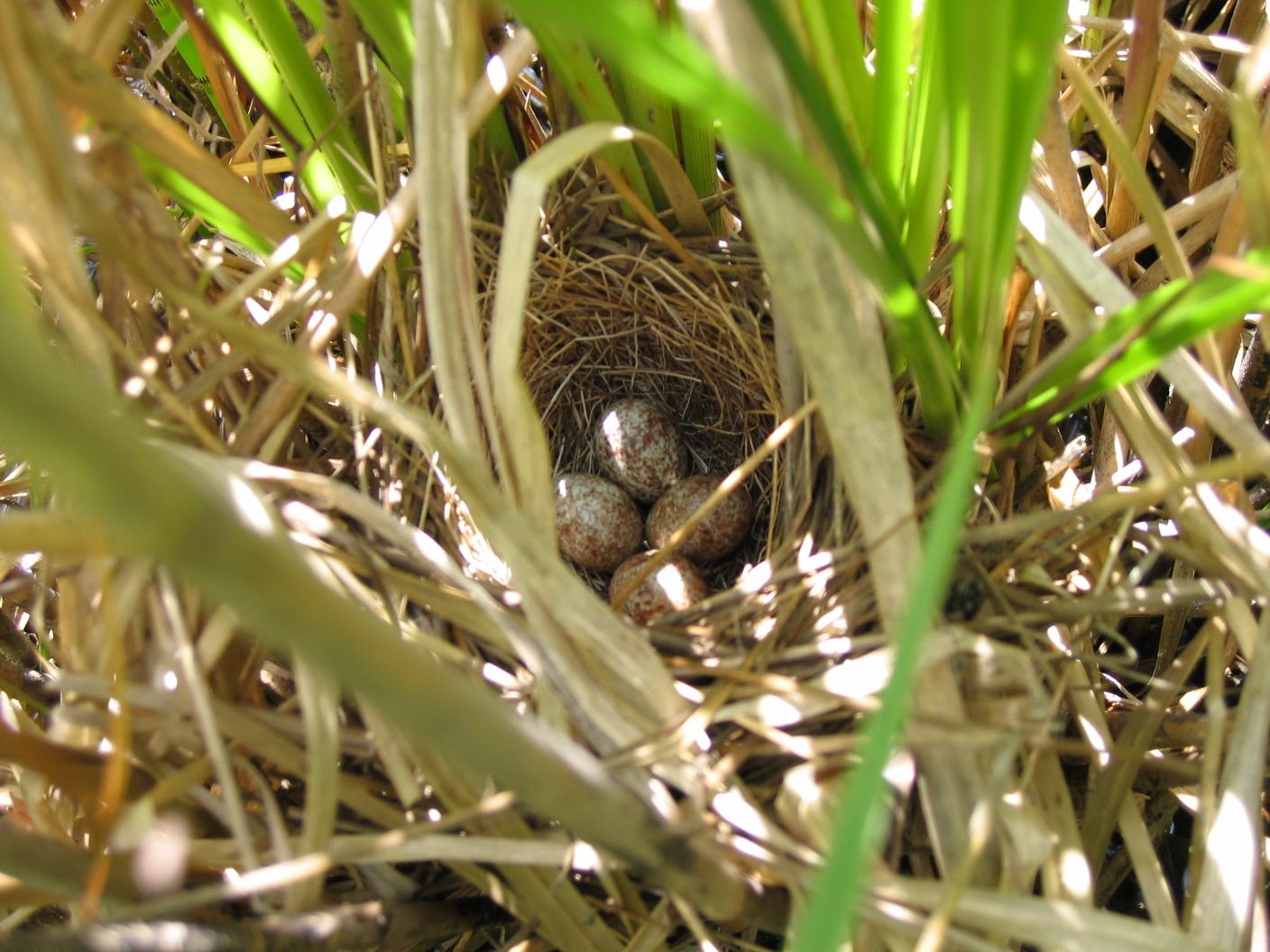Southern Reaches of Little Indian Sioux
by prettypaddle
Trip Type:
Paddling Canoe
Entry Date:
07/14/2008
Entry Point:
Little Indian Sioux River (south) (EP 9)
Exit Point:
Trout Lake (EP 1)
Number of Days:
4
Group Size:
2
Part 4 of 9
Tuesday, July 15, 2008
Day 2--Bootleg Lake--Little Indian Sioux River--Little Trout Lake
Sunlight through the tent. Now that's a nice way to wake up after an eventful evening. The tent and tarp dry out while we eat breakfast and pack the rest of the gear. We decide, based on the shallowness of the Little Pony River, that we won't follow the length of the Little Indian Sioux upstream to Cummings. Even with enough water to float a canoe, it would be a long, curvy paddle to the first campsite. For now we'll head to Little Trout and see where we can get after that.
We're on the water pretty early, but make up for it by our inability to find the portage. As we nose into the fourth or fifth likely opening, a beaver plops into the water and slaps his tail at us. He probably knows we got past the Boover Dam and is saying, "Good luck, suckers! Wait 'til you see what I've been up to!"
We had checked out the new Voyageur maps while in Ely and read that "the long portages in the northeast corner of Map 3 receive infrequent maintenance and are quite challenging." They did their homework. In spite of the long-dead and newly-fallen trees which require amazing feats of agility to maneuver over, under, around, and through the snagging branches and enormous trunks (downed by vengeful beavers or recent winds), and aside from being pretty overgrown, the first 75 rods or so of the trail is fairly distinct.
Then the trees thin, bare rock protrudes, and a multitude of paths appear. Eric's gone ahead with the canoe and I struggle to find his trail. I try to tap into some dormant, primeval tracking skills that early man surely possessed. My ancestors obviously did not stalk the elusive canoe-carrying Minnesotan. Lacking skill, I go for the trial and error method instead. I start off in a couple of different directions before I spot a stone cairn marking the path.
We're trying out the portage-and-a-half method for the first time so I drop my gear in what I hope is an obvious place (bonus if it's actually the portage), and start back for the second load. Eric and I meet in the middle (miraculously finding the first load of gear) and he brings the joyous news that there is actually a river at the other end of the portage. There are no pictures of this 200-rod portage. We load up the canoe, have some mint chocolate cookies, and continue up the river.
We put into practice our "river = overgrown lake" theory of navigation. Instead of tediously tracking each bend in the river, we just assume the trees are on islands in a grassy green lake. We paddle on and on. And on. River travel is very relaxing in a grassy, crooked sort of way.
Our theory begins to break down, or at least trees are beginning to grow in unexpected places. All the anxiety from the night before comes flooding back--we think the portage should be here somewhere, but how on earth are we going to find it when the "shore" is one big mass of undifferentiated swamp grass?
I see and dismiss from mind a log jutting out of the water--where is the portage? Is that it? No, that's another game trail. There? No, just another inlet. We paddle on until Eric says, "Huh. That log sticking out of the water had a sawn-off end. Let's go back and take a look." Ok, sure, why not? Maybe we've already paddled past the portage.
See that log just to the right of my shoulder? Now, see the portage? Yeah, we wouldn't have either without that log which turned out to be part of an old submerged dock. We shove back out onto the river (the bugs really are terrible this year) to have lunch before attempting the 376 rods.
Muck. Mud. The portage is pretty easy to find--just follow the mucky mud. And the downed trees. If you stray from the path, look for a downed tree. If you're sinking to your knees while looking at said downed tree, you're on the portage. After helping Eric shove the canoe through one particularly dense downed pine, I fall behind. The paddles and fishing pole are catching on everything and I probably should have changed out of my sandals for this one. Oh well. About a third of the way across, the muck gives out as the land begins to rise. We're doing the portage-and-a-half again so I drop the gear and head back through the muck to slog through it all over again with the food pack.
We finally make it to Little Trout and almost push the canoe right through a perfect little bird's nest. We paddle to the island to take a quick dip and rinse off the portage grime. While pulling off 10 or 15 ticks each, we discuss our options. The discussion goes something like this: "There's at least 510 rods of portaging before we get to Buck." "Looks like the clouds are piling up again." "Let's camp here."
Picking a site that looks breezy, we set up the tent and head out to try and catch dinner. This is the first year I didn't buy a license. I've finally made peace with the fact that I don't enjoy sitting in a canoe holding a fishing pole. I'm much more happy paddling Eric around while he trolls--I can let my mind wander and not have to jerk back to reality too late to catch whatever was nibbling at my untended line.
It's pretty windy and Eric's not having much luck so we head back to camp and eat dinner while watching the clouds build. It starts to sprinkle so we scurry to all the chores then retreat to the tent to watch the sun go down. We are both asleep before it has completely set.
Day 2--Bootleg Lake--Little Indian Sioux River--Little Trout Lake
Sunlight through the tent. Now that's a nice way to wake up after an eventful evening. The tent and tarp dry out while we eat breakfast and pack the rest of the gear. We decide, based on the shallowness of the Little Pony River, that we won't follow the length of the Little Indian Sioux upstream to Cummings. Even with enough water to float a canoe, it would be a long, curvy paddle to the first campsite. For now we'll head to Little Trout and see where we can get after that.
We're on the water pretty early, but make up for it by our inability to find the portage. As we nose into the fourth or fifth likely opening, a beaver plops into the water and slaps his tail at us. He probably knows we got past the Boover Dam and is saying, "Good luck, suckers! Wait 'til you see what I've been up to!"
We had checked out the new Voyageur maps while in Ely and read that "the long portages in the northeast corner of Map 3 receive infrequent maintenance and are quite challenging." They did their homework. In spite of the long-dead and newly-fallen trees which require amazing feats of agility to maneuver over, under, around, and through the snagging branches and enormous trunks (downed by vengeful beavers or recent winds), and aside from being pretty overgrown, the first 75 rods or so of the trail is fairly distinct.
Then the trees thin, bare rock protrudes, and a multitude of paths appear. Eric's gone ahead with the canoe and I struggle to find his trail. I try to tap into some dormant, primeval tracking skills that early man surely possessed. My ancestors obviously did not stalk the elusive canoe-carrying Minnesotan. Lacking skill, I go for the trial and error method instead. I start off in a couple of different directions before I spot a stone cairn marking the path.
We're trying out the portage-and-a-half method for the first time so I drop my gear in what I hope is an obvious place (bonus if it's actually the portage), and start back for the second load. Eric and I meet in the middle (miraculously finding the first load of gear) and he brings the joyous news that there is actually a river at the other end of the portage. There are no pictures of this 200-rod portage. We load up the canoe, have some mint chocolate cookies, and continue up the river.
We put into practice our "river = overgrown lake" theory of navigation. Instead of tediously tracking each bend in the river, we just assume the trees are on islands in a grassy green lake. We paddle on and on. And on. River travel is very relaxing in a grassy, crooked sort of way.
Our theory begins to break down, or at least trees are beginning to grow in unexpected places. All the anxiety from the night before comes flooding back--we think the portage should be here somewhere, but how on earth are we going to find it when the "shore" is one big mass of undifferentiated swamp grass?
I see and dismiss from mind a log jutting out of the water--where is the portage? Is that it? No, that's another game trail. There? No, just another inlet. We paddle on until Eric says, "Huh. That log sticking out of the water had a sawn-off end. Let's go back and take a look." Ok, sure, why not? Maybe we've already paddled past the portage.
See that log just to the right of my shoulder? Now, see the portage? Yeah, we wouldn't have either without that log which turned out to be part of an old submerged dock. We shove back out onto the river (the bugs really are terrible this year) to have lunch before attempting the 376 rods.
Muck. Mud. The portage is pretty easy to find--just follow the mucky mud. And the downed trees. If you stray from the path, look for a downed tree. If you're sinking to your knees while looking at said downed tree, you're on the portage. After helping Eric shove the canoe through one particularly dense downed pine, I fall behind. The paddles and fishing pole are catching on everything and I probably should have changed out of my sandals for this one. Oh well. About a third of the way across, the muck gives out as the land begins to rise. We're doing the portage-and-a-half again so I drop the gear and head back through the muck to slog through it all over again with the food pack.
We finally make it to Little Trout and almost push the canoe right through a perfect little bird's nest. We paddle to the island to take a quick dip and rinse off the portage grime. While pulling off 10 or 15 ticks each, we discuss our options. The discussion goes something like this: "There's at least 510 rods of portaging before we get to Buck." "Looks like the clouds are piling up again." "Let's camp here."
Picking a site that looks breezy, we set up the tent and head out to try and catch dinner. This is the first year I didn't buy a license. I've finally made peace with the fact that I don't enjoy sitting in a canoe holding a fishing pole. I'm much more happy paddling Eric around while he trolls--I can let my mind wander and not have to jerk back to reality too late to catch whatever was nibbling at my untended line.
It's pretty windy and Eric's not having much luck so we head back to camp and eat dinner while watching the clouds build. It starts to sprinkle so we scurry to all the chores then retreat to the tent to watch the sun go down. We are both asleep before it has completely set.










 Donate - BWCA.com
Donate - BWCA.com